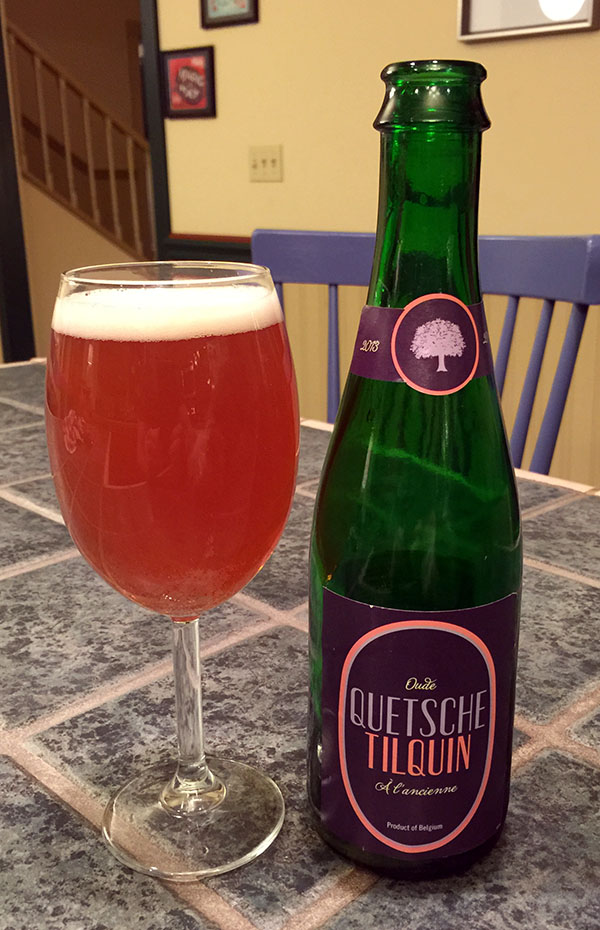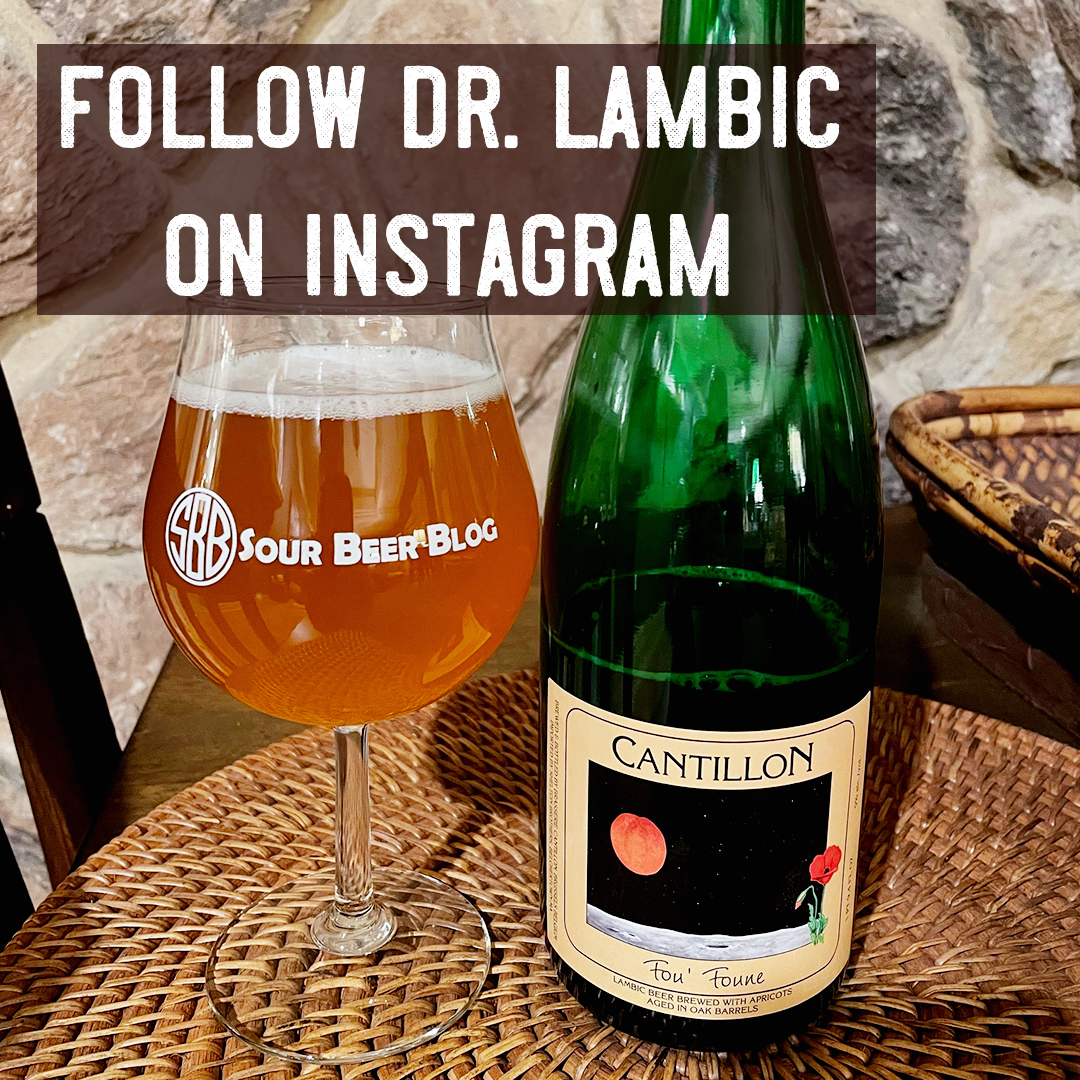Hello Sour Beer Friends!
Today I’m happy to write about the first beer from Gueuzerie Tilquin to appear on the site: Tilquin Oude Quetsche. When they released their original batch of gueuze in May of 2011, Gueuzerie Tilquin was the first new lambic blendery to open their doors in 15 years. While the new gueuzerie’s owner and blender Pierre Tilquin (pronounced Till-CAN) is relatively young, this does not mean that he lacks in experience. Although Tilquin’s formal education is in bio-engineering, and he holds a doctorate in statistical genetics, he found himself drawn to the brewing world. After completing a brewing and malting science course at K.U. Leuven, and working within the industry for around a year, Tilquin found himself working for Drie Fonteinen and eventually apprenticing as a gueuze blender under the famed master blender Armand de Belder. Adding even more experience to his résumé, Pierre then went to work for the Cantillon brewery before eventually opening his own business.
As a lambic blender, Gueuzerie Tilquin does not brew their own wort, rather they purchase wort from 4 lambic breweries: Lindemans, Girardin, Boon, and Cantillon. After this wort is delivered, it is aged for up to several years in Tilquin’s fleet of used oak barrels which once held wines from the Rhône and Bordeaux regions. Once the lambic beer takes on the characteristics desired by Pierre, it is blended straight to produce gueuze or, in this case, blended with de-stoned purple plums to produce Oude Quetsche. These fresh plums are soaked in the base lambic inside stainless steel vessels at a ratio of 2 lbs of fruit per gallon of beer for 4 months before being bottled. The bottles are then held for a minimum of 3 months in order to condition and naturally carbonate before being released for sale.
 Oude Quetsche (pronounced kwetsh) pours a hazy pink with amber highlights around the edges and forms a light white head which dissipates fairly quickly. The first aromas I took in were those of plums and plum skins. The fruit aromas smelled fresh and very much like those of a plum which has just been bitten into. Underlying these aromas was a pleasant mixture of Brettanomyces funk which included cherry pie esters, leather, light bleu cheese, musty basement, earth, and hay. There was also a distinct aroma of lactic acid. I could smell that the beer would be sour before tasting it.
Oude Quetsche (pronounced kwetsh) pours a hazy pink with amber highlights around the edges and forms a light white head which dissipates fairly quickly. The first aromas I took in were those of plums and plum skins. The fruit aromas smelled fresh and very much like those of a plum which has just been bitten into. Underlying these aromas was a pleasant mixture of Brettanomyces funk which included cherry pie esters, leather, light bleu cheese, musty basement, earth, and hay. There was also a distinct aroma of lactic acid. I could smell that the beer would be sour before tasting it.
Unlike Tilquin’s Oude Gueuze (another excellent beer), which may be among the softest gueuzes on the market, Tilquin Quetsche is blended to be more aggressive in its sourness, fruit, and funk. The beer’s sour profile tastes lemony and yogurt-like and is largely derived from the lactic acid of the base beer with a small contribution of natural fruit acids from the plums. There was no acetic acid (vinegar) that I could detect but I did notice a bit of ethyl acetate which added a pleasant sharpness to the beer’s acidity. This level of ethyl acetate was not nearly high enough to taste solvently or harsh. The acidity of the blend made the fruit’s contribution taste bright and fresh. I mostly picked up the fresh plum flavors in the middle of the taste and these flavors are layered very nicely over both a soft wheat and cracker-like malt backbone as well as a variety of Brettanomyces flavors, with leather, cherry pie, and damp hay being the most prominent. Additionally, I definitely could taste some of the cheesy / dried flower character that lambic picks up from aged hops. This sounds unpleasant, but I find these hop flavors to be another of the subtle characteristics that a well blended lambic will possess and the additional complexity they provide make these beers all the more alluring.
 The alcohol presence in this 6.4% ABV blend is transparent and there were no off-flavors to be found. The beer had a light to medium body with a medium level of carbonation. When tasting Oude Quetsche, I found that each sip started off with a puckering acidity, which gave way to a juicy blend of fruit and funk in the middle, then finishing dry with a nice medium level of tannins from the plum skins to round everything out.
The alcohol presence in this 6.4% ABV blend is transparent and there were no off-flavors to be found. The beer had a light to medium body with a medium level of carbonation. When tasting Oude Quetsche, I found that each sip started off with a puckering acidity, which gave way to a juicy blend of fruit and funk in the middle, then finishing dry with a nice medium level of tannins from the plum skins to round everything out.
Overall, Tilquin Oude Quetsche is both a delicious sour beer and an excellent example of a fruit lambic. While plums are not a fruit traditionally added to lambic, their flavors, expertly showcased by Pierre Tilquin’s blending, work very well with the acidity and funk of lambic beer. I’ve tasted about a half-dozen examples of this beer since it’s first vintage was released last year and I have always been impressed by it. It is now a permanent resident in my cellar and I highly recommend that fans of fruit lambic and sour beer in general give this one a try. Also, keep your eyes open for Tilquin’s yet to be released blackberry lambic, Mûre Tilquin à l’ancienne. Based on the quality of their previous releases, I have no doubt that it will be exceptional!
Cheers!
Matt “Dr. Lambic” Miller



